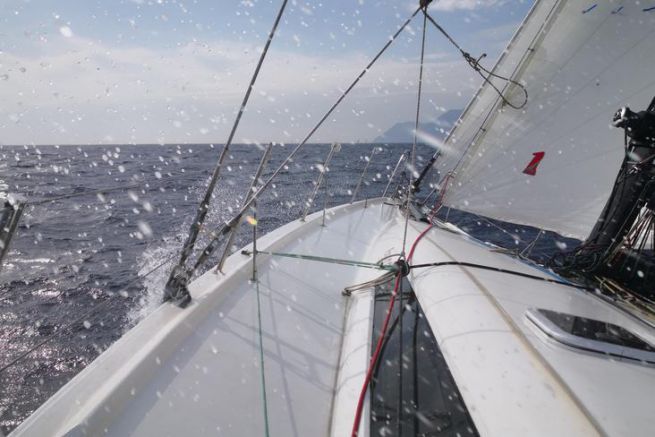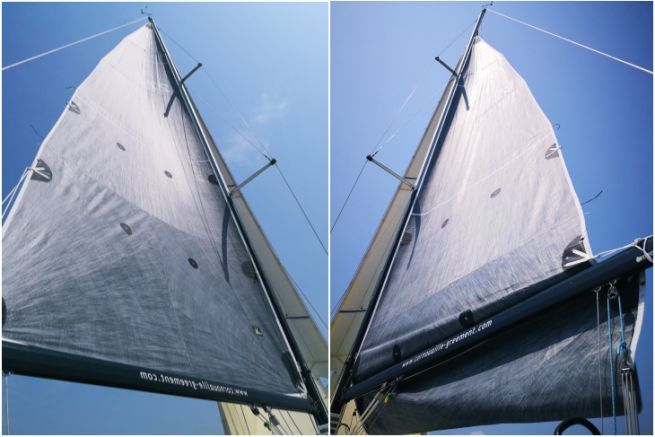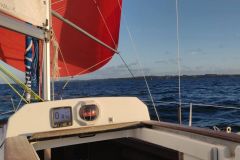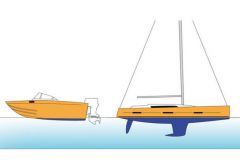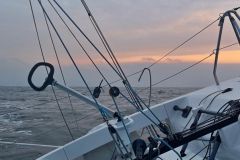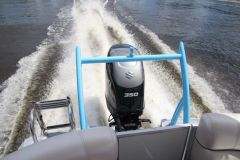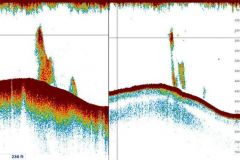For a given wind, the heel of the boat depends on the sail area and the righting torque that opposes it. The righting moment is an element that is difficult to influence, as it is mainly the result of the hull shape and ballast. However, the sail area can be changed as the wind changes. On our modern cruisers you can :

When réduire?la canopy?
If the boat is heavily heeled and the sea is mouthed, you are already at retard?! Having the canvas of time is a matter of anticipation. Offshore racers often say, "It doesn't matter if you're the first to reduce, it's important to be the first to return the canvas". When cruising too, you should not hesitate to reduce the sail, in any case if you make a mistake, it's because the weather is finally good enough to repeat the manoeuvre backwards.
Each boat is different, but in general the architects plan the first sail reduction between 15 and 20 knots. Note that the first sheep appear with a wind blowing between 12 and 14 knots. Let's say that, as a general rule, at the first sheep, you should start to consider sail reduction.
But the best thing is to anticipate. By taking the weather forecast before the start, you can prepare for an episode of Mistral, squalls or the passage of a front which will impose a reduction in sail area. You must also be attentive to the weather changes during the day, such as conditions that can create a thermal breeze . Observation is also a source of anticipation. If, one mile from the harbour, the boats are all heeled over, adopt a reduced sail plan when establishing it.
Let's not wait until the conditions are too harsh to go manoeuvring, it's a hellish spiral. If you wait too long, manoeuvring becomes harder, scarier, longer and more dangerous. Anticipation is not only a source of comfort and safety for the crew, it is also a relief for the boat.

What to reduce first, the headsail or the mainsail voile??
It is particularly difficult to answer this question as it depends on the boat, its sail plan, the crew and of course the sea state. We can still draw up a few main rules.
On boats with a lead rig and overlapping genoa, it is usually the headsail that will have to be reduced first. One or two furling turns can be made, if the boat is equipped with one, or a solent can be used. In a second stage, if the wind gets stronger, you can take a reef in the mainsail.
On fractional-rigged boats with a solent and a relatively large mainsail, the mainsail often comes first. Usually, it is lowered to the level of the forestay caplin. Then, if the wind becomes stronger, the solent can be rolled up a few turns or a staysail can be hoisted.
As each boat is unique, it is advisable to question its helm balance by testing different configurations. All the more so as the sea state is one of the factors in the equation. Upwind, in rough seas, you will try to keep power at the bow to get through the waves, whereas on flat seas you may prefer to use the mainsail to set a course.
Downwind, the situation changes, because the gîte is no longer the main problem. When choosing which sail to reduce, be aware that the headsail tends to "pull" the boat better. The upward thrust of the veil does not push the bow into the water. The centre of the sail, quite advanced, limits the risks of departures from the luff. However, for many sailboats, it is difficult to take a reef downwind, only mainsails mounted on ball bearing carriages allow it relatively easily.

Reduce canopy and start engine
If the conditions become too difficult and you are close to your destination, you will probably be tempted to furl the genoa and end up under main gear and engine. In these conditions, don't go against the engine wind at full speed, it is neither fast nor comfortable.
Position the trolley in the centre and tuck the HS in generously. Steer according to the wind angle, so as to keep the sail just filled and maintain a slight heel (10°). At the same speed you will reduce fuel consumption considerably. It is often much more comfortable to make a few tacks than to race into the wind.


